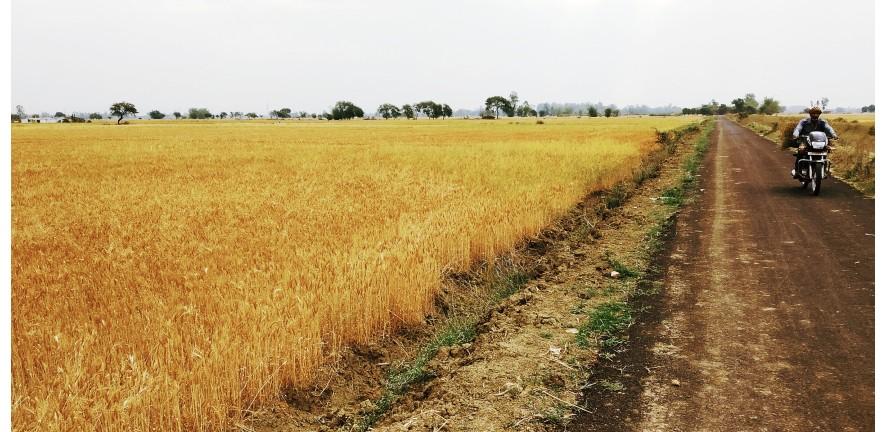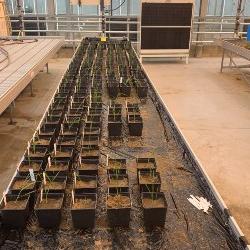
Submitted by K.L. Hlaba on Tue, 12/10/2021 - 17:05
Plants need water to grow. An obvious but an often ignored fact when people contemplate agriculture. The simple reality is that if a crop doesn’t get the water it requires, yields will be reduced and, with climate change, a lot of crops now aren’t getting the water they need. Drought is therefore a serious problem facing agriculture globally.
Having said that, drought is not a new problem. For decades researchers have been studying the effects of drought on the development and yield of many crops. As part of TIGR2ESS, NIAB is working to identify what types of wheat cope best with drought conditions. One problem with a lot of drought research is that it focuses on 'terminal drought'. Terminal drought means that when drought comes, it stays. This is relevant to many wheat growing environments (e.g. Australia) but not others. Northern India, for example, would experience terminal drought but by using irrigation at important periods of growth farmers allow the wheat to recover from drought. Plants will behave differently during terminal drought compared to drought recovery, but study of drought recovery relevant to these agricultural patterns lags behind.
Now, as part of the TIGR2ESS program, teams from NIAB (Flagship Project 3) and the University of Essex (Flagship Project 2) have come together to try and identify the physiological changes that occur during drought and recovery, with the aim of gaining information that will help improve methods for dealing with drought and target plant breeding at the required traits for best drought recovery.
So, how do you study drought recovery?
In the simplest form you grow lots of pots of wheat in a glasshouse and then at important parts of the wheat’s lifecycle, you withhold water from half of the pots whilst continuing to water the other half (the unstressed controls). After you’re certain the un-watered half have been stressed for a period of time you start watering again to begin recovery.
As with most experiments, the ‘how’ is less interesting than the ‘what’. For our study, this is where the University of Essex and Tracy Lawson’s lab comes in. Prof Lawson (from FP2) is a leader in the study of photosynthesis, which is one of the major plant processes effected by drought. With Tracy’s lab involved this project will be able to measure numerous aspects of photosynthesis before, during and after drought to give us a better understanding of how plants respond during stress and recovery. Along with the detailed look at photosynthesis we will also be focussing on various yield characteristics of the wheat. Because low yielding plants don’t save the world!
The collaboration between NIAB and Essex, and between FP2 and FP3 on this project, is one of the major strengths of TIGR2ESS. Without the program bringing our teams together we would not be able to perform this experiment. The integration of the two teams has allowed for the development of an effective protocol and the maximisation in effectiveness of the time and money spent on the experiment.
The drought and recovery trial at an early stage.
What does it achieve?
As with any experiment the expected outcomes can be broken down into the head and the heart. The head are the outputs expected of most scientific experiments, data provided to produce papers and to drive new grant applications on the subject. The heart, well most scientists don’t choose this career for the fame and the money (there isn’t any). Most scientist choose this career out of curiosity and/or the desire to help people. As with any experiment we expect this one will answer some questions on drought recovery but raise new ones to further pique our curiosity. As for doing good in the world, our hope is that the results provided here will inform further research on drought recovery to improve practices for dealing with drought stress and help breed wheat better suited to the challenging conditions climate change will produce. Additionally, the method produced could be applied to other staple crops to help them overcome similar challenges in other regions of the world.
Written by Dr Robert Jackson.
Main image: Wheat field in India. Credit: Xiaomi Redmi Y2 at pixabay.com

